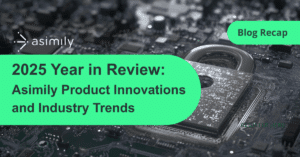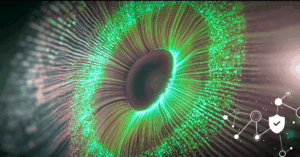The Role of IoT in Smart Cities

While people often consider digital transformation in business or personal terms, technology is critical to the data-driven decision-making necessary for making urban systems and services responsive to residents’ needs. City governments not only use Internet of Things (IoT) devices but plan to expand their initiatives, with research noting the following estimates:
- $2.5 trillion by 2025: estimated global smart city market
- 1.6 billion units by 2025: projected IoT devices in smart cities
- 65% by 2025: percentage of the world population with 5G networks
As cities begin implementing these technologies on a wider scale, they need to understand not only how to use them but also how to protect them. By understanding the role of IoT in the development of a smart city, municipal governments can incorporate the appropriate security measures to mitigate cyberattack risks.
What are Smart Cities?
Smart cities collect data through IoT devices, like sensors, or other technologies to manage resources, improve operational efficiency, and respond to social issues. Smart city technologies enable the government to engage in real-time monitoring for critical services like:
- Energy consumption
- Waste management
- Traffic flows
Using these technologies, the cities can improve residents’ quality of life by responding to challenges like:
- Overpopulation
- Resource depletion
- Environmental degradation
- Traffic congestion
What are the Benefits of Smart Cities?
By optimizing resources and reducing emissions, smart cities foster environments that are not only livable but also resilient. Research notes that smart cities achieve various benefits from using technology, including the following reductions:
- 25% for travel time
- 20% for water consumption
- 30% for crime rates
- 80% for energy consumption for street lighting
- 40% for waste collection costs
- 50% for energy consumption with smart building
With real-time monitoring for energy consumption, waste management, and traffic flows, smart city technologies improve citizen’s overall quality of life. Further, they enable more citizen engagement that allows community participation when trying to address residents’ specific needs, driving transformative urban policies that promote sustainability and better living experiences.
How is IoT Improving Urban Life?
By connecting everyday objects and devices to the internet, cities can gather and analyze vast amounts of data in real time, allowing for smarter decision-making and more efficient resource allocation.
Smart Traffic Management
Smart traffic management systems utilize IoT sensors to gather data on traffic patterns, congestion, and accidents. When strategically placed at intersections and along roadways, the sensors improve traffic flows with adaptive signals and route recommendations with real-time data about:
- Vehicle counts
- Vehicle speeds
- Road conditions
Further, cities can anticipate traffic surges with predictive analytics that incorporate historical data and real-time inputs
Smart Parking
Smart parking uses in-ground vehicle detection sensors embedded in parking spaces to detect vehicles for real-time identification of empty parking spots. The central parking management system then guides drivers to available spaces, improving traffic flows.
Smart parking systems reduce:
- Congestion
- Driver frustration and stress
- Vehicle emission
Public Safety
IoT sensors and connected devices improve public safety by collecting data that allows city officials to promptly respond to incidents. Smart cities use IoT technology to:
- Detect suspicious activity
- Monitor traffic patterns
- Address road hazards
Moreover, integrated safety and security systems, such as biometrics and surveillance cameras, create a comprehensive approach to public safety enabling communication and rapid emergency response.
Waste Management
Smart waste management solutions integrate sensors into waste bins so municipalities can monitor real-time waste levels, allowing for efficient scheduling of collection routes. IoT-driven smart waste management transforms traditional garbage collection into a data-informed, sustainable practice.
These sensors provide various benefits, including:
- Preventing overflows
- Minimizing unnecessary pickups
- Optimizing vehicle usage
- Reducing fuel consumption and costs
- Lowering labor costs
- Reducing landfill overflow
Utility Management
Utility management leverages IoT-equipped smart solutions to optimize energy consumption, water usage, and waste management. By gathering real-time data on energy use and water flows, cities reduce costs and minimize environmental impact.
Remote Monitoring
Remote monitoring through IoT-based solutions significantly enhances utility management for citizens by providing real-time insights and improving service efficiency.
Monitoring public housing with smart solutions provides the following benefits:
- Timely maintenance notification
- Cost reduction by fixing small issues quickly
- Optimizing resource usage
Additionally, cities can use IoT-enabled devices for:
- Identifying utility outages or system inefficiencies
- Tracking appliance consumption
- Monitoring environmental conditions, like air and water quality
- Tracking pollution and hazard levels for timely interventions
Public Transport
By deploying sensors on vehicles, at stations, and throughout the infrastructure, cities can improve public transportation reliability by analyzing real-time data about:
- Passenger movements
- Ticket sales
- Vehicle locations
- Environmental conditions
By leveraging analytics, the municipality can improve vehicle capacity and optimize services to meet demand, like deploying additional vehicles to reduce overcrowding.
Recommendation for Securing Smart Cities
In April 2023, the Cybersecurity and Infrastructure Security Agency (CISA,) in conjunction with several international cybersecurity authorities, published “Cybersecurity Best Practices for Smart Cities.” When looking at the advice for the devices and third-party supply chain risks, smart cities could find that using a passive scanning technology to identify, monitor, and manage IoT devices enables best practices.
Zero Trust Architectures and Managing Architecture Changes
CISA separates out implementing zero trust architectures and managing changes to internal architecture risks. However, these processes can become overwhelming when treated as separate security activities.
Zero trust principles rely on ensuring that every new connection requires authentication and authorization before gaining resource access. From the IoT perspective, many organizations start with network segmentation, making it difficult to secure and monitor devices on a single network.
For smart cities to effectively manage both these recommendations, going beyond zero trust architecture and using targeted segmentation may be more effective. Targeted segmentation creates a shared risk profile for a group of devices so organizations can implement a variety of mitigation techniques for those resources.
Patching Systems and Applications
For many cities, identifying, scanning, and patching IoT devices remains a challenge. IoT devices are notoriously finicky, dropping their connection when scanned by traditional tools. CISA notes that smart cities need to secure software assets through an asset management program, and a passive scanning solution can provide the necessary information like:
- Hardware: manufacturer, model, serial number
- Software: operating system, software version, firmware revisions
- Security assessment: vulnerabilities and risks
Additionally, a passive scanning solution can help prioritize remediation activities for these devices by aggregating and analyzing:
- Manufacturer-supplied security data
- Open-source software components
- Vulnerability criticality
- Current attack methods using the vulnerability
Hardware and IoT Device Supply Chain
CISA suggests that municipalities leveraging IoT devices and hardware should determine whether they need support from third-party or external sources. An IoT-focused solution to help perform due diligence research and understand risk. For example, an IoT risk management and monitoring solution should use manufacturer data and information about the network environment to provide insight into:
- Device risk: the number and types of devices that have active vulnerabilities and would have a high impact on operations
- Number of vulnerabilities remediated: both the total number and the number of high-risk vulnerabilities fixed during a given period
- Risk modeling: pre-purchase and deployment simulations to identify the least risky configurations
How Asimily Helps Manage Smart City IoT
The Asimily platform is designed expressly with IoT devices in mind. It’s built to monitor traffic to and from IoT sensors and other connected devices in addition to surfacing anomalous behavior that might indicate an attack in progress.
Asimily provides vulnerability information on high-risk security issues with our proprietary algorithm that digests huge datasets from EPSS (Exploit Prediction Scoring System), Software Bills of Material (SBOMs), Common Vulnerability and Exposure (CVE) lists using the MITRE ATT&CK Framework. This analysis often results in fast solutions for recent vulnerabilities, enabling customers to deploy new mitigations quickly to reduce risk. To learn more about Asimily, download our IoT Device Security in 2024: The High Cost of Doing Nothing whitepaper or contact us today.
Secure Every IoT Device.
Automatically.
Cyber threats move fast — so should you. Asimily gives instant inventory and smart, prioritized risk mitigation insights for every IoT, OT, and IoMT device — so you can take action before threats strike.




